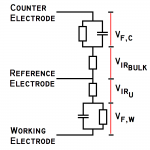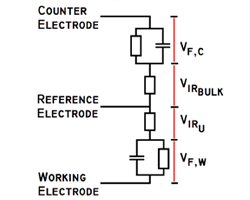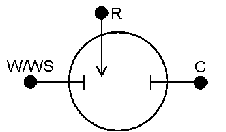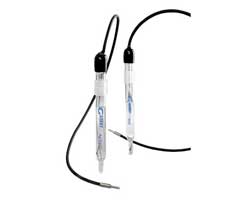How to Speak Potentiostat Compliance
 What’s important in the selection of a potentiostat? That depends greatly on its intended use. This page addresses an often misunderstood term.
What’s important in the selection of a potentiostat? That depends greatly on its intended use. This page addresses an often misunderstood term.
Compliance voltage
Compliance voltage is the voltage available at the counter electrode that can be used to force current to flow and still maintain control of the working electrode voltage. The compliance should be specified in conjunction with a current value: “20V @ 250mA” or “20V @ full rated current”. An amplifier’s output voltage decreases at higher currents due to the output impedance of the amplifier.







